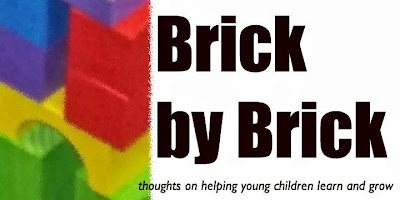Chapter 4 - Bubble Wrapping Not Required
Our society today has become risk-adverse. Parents are concerned about kids playing out of their sights. Warnings about this or that are always appearing. Schools concerned about parent reprisals are limiting what can be done on the playground or eliminating outdoor equipment all together. It's become a perpetuating myth that danger is everywhere and adults must go to great lengths to protect kids from the world.
Certain types of dangers become overemphasized and kids become "bubble wrapped." This environment creates kids who are dependent and anxious. These kids will not grow into adults who are strong, adventurous, or courageous.
Children are made to be risk-takers. They want to push the boundaries. Taking risks and exploring boundaries helps develop problem-solvers. Kids grow into adults who are resilient, who can handle things as they happen. They become self-sufficient.
Recently I was on the playground with a group of four-year-olds. We were playing and enjoying ourselves. (We were climbing on the equipment, jumping off stairs, and even climbing up the slide - while watching for others who wanted to slide down.) Some clouds began to roll in. In the distance we could see darker clouds. Some of the kids were talking together. One came over to me: "Is it going to storm, Mr. Scott?"
I looked up. "I see the clouds. It may rain later. But I don't think it will rain now."
I went back to what I was doing. The boy stood nearby and looked up.
"What will we do if it rains?" he asked.
I realized that he seemed afraid. Afraid of rain?
I said, "If it rains, we will get a little wet. But we will go inside if it starts. But I think it's okay now."
I wondered later how he came to see rain as so dangerous. Sometimes we adults say "Be careful" or "Watch out when you do that" and build kids that are too cautious, too fearful to even try new things. While I think we need to keep kids safe and teach them to think about what they are doing, we can allow a little experimentation and a little "danger." Allowing kids to experiment also allows them to assess the situation for themselves and set their own level of acceptable risk. Kids will test and try things and not do anything that makes them feel too unsafe.
Along with risk-adverse thinking comes fear of failure. Kids are often afraid to take some risks or try something new because they may fail at it. Adults try to prevent kids from failing too often. Trying - failing or succeeding - also build resilience and tools for problem-solving.
How can you give kids some space to explore and take some risks? It may be more risky to try and eliminate all possible dangers.
Some links from the book:
How can you give kids some space to explore and take some risks? It may be more risky to try and eliminate all possible dangers.
Some links from the book:
- Free-Range Kids
- Playing It Safe? Too Safe?
- Risky Play: Why Children Love It and Need It
- Why Rough and Tumble Play Is Really Good
And a few more:


